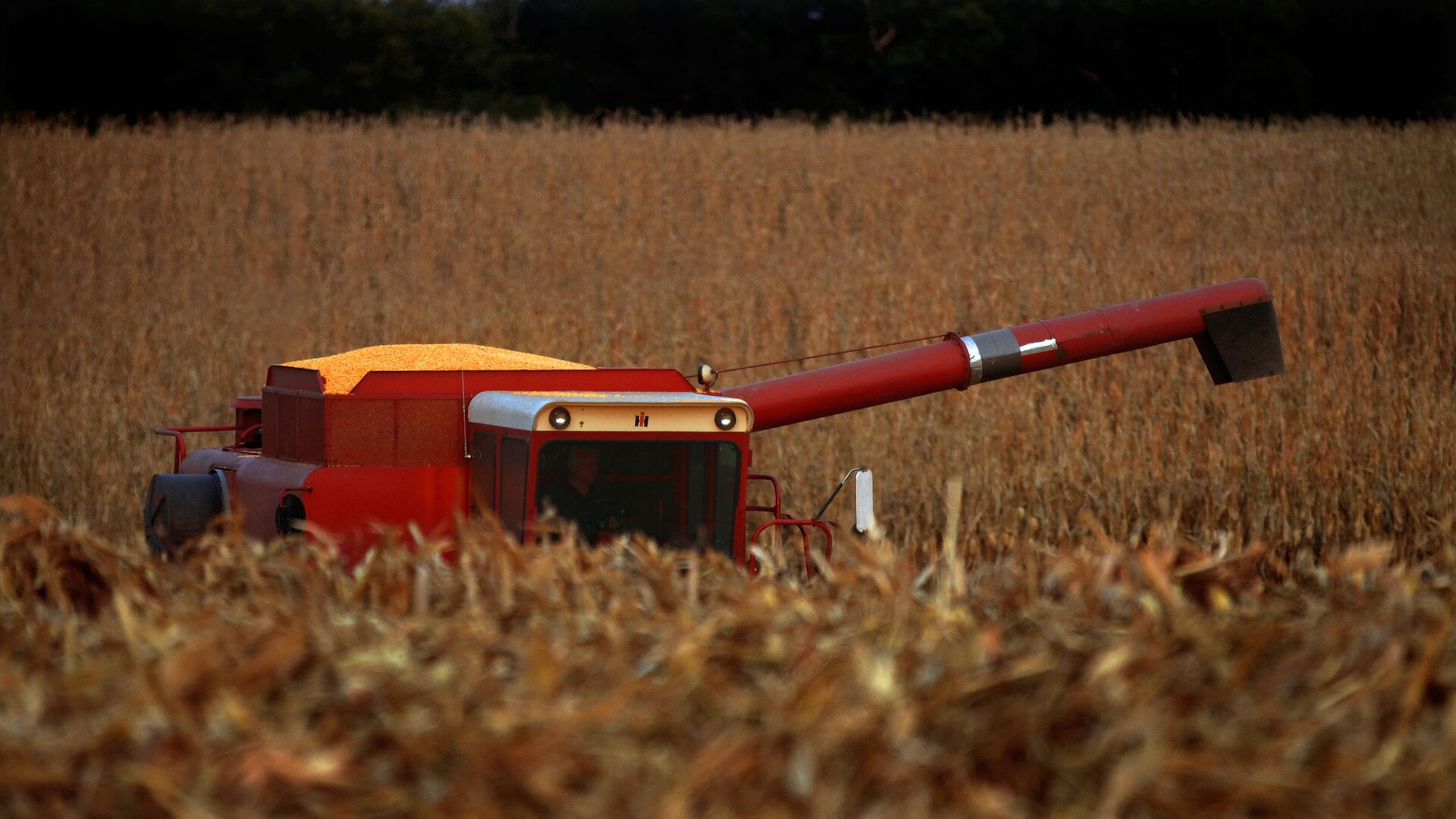‘Uncharted Territory’: US Crop Shortages Amplifying Global Grain Price Issues, Experts Say

© AP Photo / Seth Perlman
Subscribe
Wheat was selling at €330 per ton on Wednesday, down from its May high but well above where it stood six months ago, prior to Russia’s special operation in Ukraine. Kiev has claimed Russian forces are blocking grain exports via the Black Sea, but Moscow has proven they could have safely shipped grain out for months.
A recent report by the US Department of Agriculture (USDA) has revealed that the area of farmland left unplanted has tripled in the US in recent years, thanks to natural disasters. With global grain prices already high thanks to a number of issues, including shipping interruptions in the Black Sea, the global effects of a short US harvest could be substantial.
According to the report, extreme weather events such as severe drought and flooding have prevented planting on 6.38 million acres of farmland this year - three times the 2.1 million acres left unplanted in 2021. The Dakotas, Arkansas, Minnesota, and California are among the worst-hit regions.
“Corn yields across the US will be well below average,” Ron Heiniger, associate professor at North Carolina State University and cooperative extension corn specialist at the Vernon G. James Research and Extension Center in Plymouth, who has worked with farmers in the region for 28 years, told Sputnik on Wednesday.
“Delayed planting due to too much rain, coupled with mid to late season drought, has hurt this year's corn crop across the Midwest. I expect the US average yield to be below 162 bu/a [bushels per acre], which is well below the trendline. In the southeast, US corn yields will be much lower than last year at 130 to 135 bu/a. As for soybean, I think that the late-season drought has also hurt the soybean yield potential. Again, it will be below average nationwide. In the southeastern US, soybean yield looks to be above average due to late season rainfall in August.”
Heiniger predicted that “corn supplies will be extremely tight” and would require rationing if there are shortages. However, he predicted soybean production would be sufficient for domestic use.
Chad E. Hart, Professor of Economics, Crop Markets Specialist and Extension Economist at Iowa State University, was more confident, telling Sputnik the US would “definitely produce enough for the domestic market.”
“The US domestic market usually uses 80-85% of the corn crop and 50-55% of the soybean crop, with exports and stocks taking the remainder. Feed demand for both crops is declining as the US cattle herd shrinks and the number of bushels leaving via exports has also declined over the past couple of years. The combination of remaining stocks from last year’s crops and the reduction in feed and export use ensures the US will have enough for the domestic market,” he said.
Both experts agreed that there was little in the way of a backup plan in case of a deficit, with Hart noting that “the US crop markets themselves maintain crop stocks across marketing years, with prices as a signal to drive stock-holding and crop production”
“We are in uncharted territory,” Heiniger said. “I see nothing that would provide a backup scheme. Grain supplies worldwide are low, and if the US corn and soybean harvest are as low as I predict, then the price of food will rise dramatically, poor people will go hungry, and food hoarding will be common.”
“What help can they count on?” he said about struggling farmers.
“The only thing they can count on is crop insurance. It is unlikely that the state or federal government will declare a crop disaster and offer monetary support.”
However, another concern is global markets, since the US provides a sizable part of world food supplies. Several Arab states, which must import much of their food, held a summit in Egypt earlier this week to outline a path for cooperation as prices remain high.
“[M]any regions around the globe are struggling with extreme weather conditions impacting crop production (including the US),” Hart noted. “That said, global production is better than one might expect. Global corn production is projected to be 3% less than last year. Global soybean production is projected to be 11% higher than last year (as South America continues to expand production). Global wheat production is projected to be roughly equal with last year.”
“Global prices, like US prices, have risen sizably over the past two years, but also peaked in May and have worked slowly lower since then. Thus, my outlook for global prices is the same as my outlook for U.S. prices, some increases in crop prices for the remainder of the year, but prices will not reach the highs we saw in May,” Hart added.
“Nations that import grains will find nothing to import and some people will starve,” Heiniger warned, predicting that heat waves in Europe and drought in Argentina would combine with US deficits to cause prices to “go to levels never before seen, with corn near or over $10 per bushel.”
However, Hart predicted the globe will do a better job of managing the crisis.
“[T]he world is already managing to head off diminished supplies,” he pointed out. “USDA crop projections show increased corn production in South America and southern Africa for the coming growing season. Most of the major soybean producing countries (the US, Brazil, Argentina) are projected to increase production. Canada, Russia, and China are projected to have larger wheat crops. Weather/production challenges for one part of the world are often production/marketing opportunities for other parts of the world.
“The higher crop prices over the past couple of years have provided incentives for global farmers to increase plantings, which they have,” he also noted. “And while weather conditions have reduced production in some areas, the overall trend in global crop production has been for increased production (to match the increased usage of crops by the global population).”



